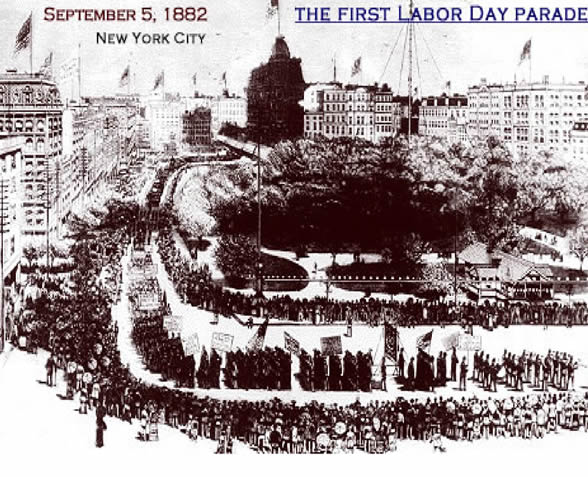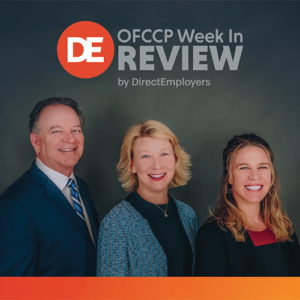
- Twenty States File Suit to Strike Down EEOC Technical Assistance Documents Regarding Disputed Sexual Orientation and Gender Identity Protections
- OFCCP Came Out of Hibernation and Exploded with Three New Enforcement Initiatives
- OFCCP’s New Emerging AAP Delivery Portal and AAP “Verification” Program: Much Ado About Nothing
- DirectEmployers Partners with Leading Neurodiversity Expert Haley Moss to Promote Disability Inclusion & Diversity in the Workplace
- Form I-9 Flexibility Continues Per COVID Precautions
- New Courses Available for Transitioning Military Spouses
- Sample Application Now Available for “HIRE Vets Medallion Award”
- OFCCP Announced 400 New Full Compliance Reviews of Construction Contractors in its Latest CSAL
- It’s September?! Take A Moment to Be Aware
- Artificial Intelligence in the Hiring Process…Friend or Foe?
- Back to the Future: OFCCP Rescinds as Premature the Trump OFCCP’s Rescission of OFCCP’s Interest to Evaluate Employer EEO-1 Component 2 Pay Data Reports
- August Job Numbers Plummet by Over Half a Million Jobs: COVID-19 Economic Recovery Stunted
- Nomination Process Open for the Advisory Committee on Veterans’ Employment, Training, and Employer Outreach
- President Biden Issued EO On White House Initiative on Advancing Educational Equity, Excellence, and Economic Opportunity through Historically Black Colleges and Universities
- Revised EEO Tabulation Data for AAPs Must Be Used Starting January 1, 2022
- The First Labor Day Parade – Almost a Disaster!
Monday, August 30, 2021: Twenty States File Suit to Strike Down EEOC Technical Assistance Documents Regarding Disputed Sexual Orientation and Gender Identity Protections
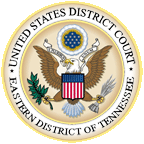
Specifically, the plaintiff-states seek a declaratory judgment from the court, setting aside the following administrative actions and absolving the states from being bound by them:
- the Civil Rights Division of the DOJ’s March 26, 2021 memorandum concluding that since the language prohibiting discrimination “on the basis of sex” in Title IX of the Education Amendments of 1972 was sufficiently similar to the “because of” sex language in Title VII that Bostock relied on in ruling Title VII prohibited discrimination on the basis of sexual orientation and gender identity, Title IX also prohibited discrimination on the basis of sexual orientation and gender identity;
- the DOE’s interpretation of June 22, 2021, concluding that Title IX prohibits discrimination based on sexual orientation and gender identity;
- the DOE’s “Letter to Educators” fact sheet of June 23, 2021, regarding discrimination based on sexual orientation and gender identity, including examples of discrimination involving student use of bathrooms and participation in school sports commensurate with their gender identity; and
- two June 15, 2021, “technical assistance documents” EEOC Chair Charlotte Burrows issued, without Commission approval, entitled “Protections Against Employment Discrimination Based on Sexual Orientation or Gender Identity” and “Sexual Orientation and Gender Identity (SOGI) Discrimination,” which note that:
- prohibiting a transgender person from dressing or presenting in appearance consistent with the person’s gender identity is discriminatory under Title VII;
- employers may not deny an employee equal access to a bathroom, locker room, or shower that corresponds to the employee’s gender identity;
- intentional or repeated use of the wrong name and pronouns in reference to a transgender employee would create a hostile work environment that is discriminatory based on gender identity; and
- an employer may not use a customer or client’s preferences as justification for discriminatory action against employees who have a different sexual orientation or gender identity.
- See our previous story, “Dispute Breaks Out at EEOC Between Republican Commissioners and the Democrat Chair Over Whether the Chair May Issue Policy Guidance Without a Commission Vote: Control of Commission Policy at Stake…And the Transgender Bathroom Issues are Back!” for the play-by-play on these events.
The Plaintiff-States contend that the administrative actions they challenge amount to legislative rules enacted without the appropriate “notice and comment” procedural requirement; that the administrative rules’ findings and conclusions are “arbitrary, capricious, an abuse of discretion, or otherwise not in accordance with law;” that the DOE’s actions are contrary to Title IX law pertaining to prohibiting discrimination “on the basis of sex;” and that the actions of the DOE and EEOC violate the spending clause in the U.S. Constitution, the First and Tenth Amendments rights of the states, and exceed the scope of each agency’s power and exceeded the authority authorized to them by Congress.
How We Got Here
The lawsuit is an outgrowth of the Biden Administration’s sweeping expansion across the Executive Branch of government of the decision in Bostock. In Bostock, the U.S. Supreme Court specifically declined to address questions about the use of sex-segregated bathrooms, locker rooms, and dress codes based on gender identity, noting that such laws were not before the Court (a point noted by Justice Samuel Alito in his dissent, and foreshadowing the very issues the administrative actions now address). Yet, the at-issue agency actions rely on the Bostock decision to issue these new guidance documents interpreting the law to prohibit the exclusion of students and employees from sex-segregated bathrooms, locker rooms, and dress codes commensurate with their gender identity. These twenty states have now brought the present litigation in an attempt to “pare back” the interpretations to the narrow holding of Bostock.
Additionally, as noted in a previous WIR story, a procedural dispute arose within the five-Member Commission following Chair Burrow’s unilateral issuance on June 15, 2021 of two controversial fact sheets shedding light on the Biden Administrations policy thinking. Specifically, it became clear that a concerted effort was underway within the Biden Administration to simply exert Executive power to force a result and invite Republicans to challenge the President’s actions in the courts.
In the EEOC fact sheets fight, Chair Burrows neglected to obtain the approval of the three Republican Commissioners who comprise the majority of the Commission. Burrows declared that the fact sheets were merely applying the Bostock decision (not simply interpreting Title VII law). Chair Burrows also argued that the Commission had approved of the notions expressed in the fact sheets in an earlier administration even though the issues were not addressed in the Bostock decision. Oddly, Chair Burrows’ rejoinder thus admitted the need for Commission approval before the Commission could announce EEOC policy. This lawsuit unsurprisingly adopts many of the same procedural criticisms EEOC’s Republican Commissioners had lodged in response to what they viewed as Chair Burrows’ actions in publishing the two fact sheets in question. The lawsuit now extends those arguments to the actions of the DOJ and DOE as well.
What Happens Next?
Should the Court find one or more of the challenged federal agency guidance memoranda violative of the law, the Court would issue an Order Declaring them unlawful. The Plaintiff-states would then likely have to seek an injunction from the Court to compel the at-issue federal agencies to withdraw the offending guidance documents and policies since it is not likely that the Biden Administration would voluntarily do an about-turn on these issues.
Special thanks to employment attorney Jay J. Wang of Fox, Wang, & Morgan P.C. for contributing this story.
Tuesday, August 31, 2021: OFCCP Came Out of Hibernation and Exploded with Three New Enforcement Initiatives

On Tuesday, August 31, 2021, the Office of Management and Budget (OMB) approved OFCCP’s request for Paperwork Reduction Act authority to take the next steps to implement two new enforcement Initiatives:
- The creation and opening of a first-ever electronic portal to allow federal contractors to file electronically their Affirmative Action Plans with OFCCP when OFCCP has requested them for audit, AND
- a new AAP certification Initiative OFCCP hopes to enforce against federal contractors.
| Note: Read John C. Fox’s bonus blog post immediately after this story, discussing the many unexpected issues this initiative has raised, the timing during which OFCCP will roll out these two new initiatives, and the special surprise OFCCP has in store for some AAP vendors. |
On Wednesday, September 1, 2021, OFCCP also released its second CSAL audit list of the Biden OFCCP. While it was small (only 400 compliance reviews of 356 actual construction contractors), it did signal OFCCPs return to full regular Compliance Reviews, a needed first step to help the agency regain its station and integrity among federal contractors. See our Week In Review story below to see what this means for the direction of OFCCP construction company audits going forward.
On Thursday, September 2, 2021, OFCCP announced it was rescinding a Trump OFCCP Notice of disinterest in accessing and using the Component 2 hours worked and pay data. Instead, in an about-face, OFCCP announced it would obtain and use the Component 2 data now at the EEOC to help OFCCP identify audit targets in the future. While this does not seem likely to be helpful to OFCCP, please see our Week In Review story below to see what this means for the direction of OFCCP audits going forward.
Tuesday, August 31, 2021: OFCCP’s New Emerging AAP Delivery Portal and AAP “Verification” Program: Much Ado About Nothing
- Both New Initiatives Lack Regulatory Authority and Both Are Unenforceable
- But, will contractors nonetheless flock like lemmings?
Rapid-Fire Takeaways
What Just Happened
OFCCP has now received approval (click on all boxes of interest to you on the linked document to make that information appear) from the Office of Management and Budget (“OMB”) following its “Information Collection Review” of OFCCP’s “Information Collection Request” to go forward for three years with two inter-related contractor compliance initiatives. The Obama OFCCP envisioned both initiatives, the Trump OFCCP put them forward to OMB and the Biden OFCCP now hopes to implement them. They are what I will call the “AAP Portal Filing Initiative” and the “AAP Certification Initiative.”
Significantly, OFCCP advised OMB’s Office of Information and Regulatory Affairs (“OIRA”) in a lengthy April 28, 2021 Supporting Statement A that it does NOT intend to seek regulatory authority for either new Initiative. (Read Supporting Statement A if you want to understand what OFCCP is proposing to do. It is all there in one place…in one lengthy and detailed, but well-written, document.) Of course, OFCCP like all federal agencies, needs legal authority independent of OMB’s approval of both Initiatives pursuant to OMB’s Paperwork Reduction Act oversight authority. OMB does not anoint federal agencies with substantive legal authority to act, but rather simply reviews the agencies’ proposed burden on the regulated community and the “information collection requests” the agencies propose to OMB for review and approval. OMB’s role is only to make sure that what the federal agencies are proposing is not inappropriately burdensome on the regulated community and is consistent with the work of other federal agencies and neither duplicative of nor in conflict with them.
Helpful OFCCP Navigational Documents
Apart from reading OFCCP’s Supporting Statement A, you may wish to peruse two OFCCP “Guides” designed to help those persons assigned to input data into OFCCP’s portal software and make the called-for declarations discussed below (among those federal contractors and subcontractors which choose to volunteer to comply with one or both of OFCCP’s new Initiatives.) The two Guides are the OFCCP’s User Guide for the Verification Interface (AAP-VI) (26 pages) and OFCCP’s Administrative Guide for the Verification Interface (AAP-VI) (22 pages). Both are easy reads because they are well organized and read like childrens’ books. Both Guides display scant language on their pages. Also, pictures on virtually every page interrupt the text and display screen shots of the pages in the filing portal software users would be completing, if they choose to comply with OFCCP’s requests to contractors that they use the portal. A nice “Show-n-Tell” for those persons contractors and subcontractors choose to punish by assigning them to complete all this paperwork if the contractor/subcontractor agrees to submit and comply with either or both of OFCCP’s two new Initiatives.
Timing
OFCCP told OMB that it would require contractor compliance with both Initiatives 90 days after OFCCP was able to launch its portal I will describe, below. OFCCP has thus far given no private or public report of when it will complete the Portal and will open it for use by covered federal Government contractors and subcontractors. In addition, before OFCCP may open its portal to federal contractors/subcontractors subject to audit to deliver their AAPs (if they choose to do so) through OFCCP’s portal, OFCCP needs to double back yet to OMB to request a change to all of OFCCP’s audit Scheduling Letters to direct the submission of AAPs to OFCCP’s coming portal. So, this is going to be a while. Many jaded federal contractors have already opened side betting pools handicapping the odds as to when OFCCP might finish building, testing, making operational its portal, getting all the needed paperwork to completion and then allowing 90 days to go by. Not this Fiscal Year is an entirely safe bet (only 24 days left to the new federal Fiscal Year. Where is that FY 2022 federal Budget, by the way?) Also, “not this calendar year” is likely also a safe bet (only 116 days left in this calendar year, including many holidays). Spring 2022?
The Portal Initiative
OFCCP first proposes to build an electronic portal to receive, during OFCCP audits, the Affirmative Action Programs (“AAPs”) for (a) Minorities and Women, (b) Individuals with a Disability, and (c) Protected Veterans which OFCCP Rules require BOTH covered federal Government contractors AND subcontractors to develop, maintain and then annually update.
Let’s call this the “Portal Initiative,” although the title OFCCP has officially given its portal is “Affirmative Action Program Verification Interface (AAP-VI)”. For those of you with minds predisposed to mathematical calculations or for whom Latin is your first language, the “VI” stands for “Verification Interface,” not Roman numeral six. Acting as a portal, AAP-VI is simply a mailbox to receive, OFCCP hopes, electronic (i.e., OFCCP will receive PDF documents through the portal) and digital copies of all three types of the above-referenced federal contractor Affirmative Action Plans (including Functional Affirmative Action Plans (“FAAPs”) once OFCCP has summonsed them from Supply and Service contractors, including universities and colleges (but not construction contractors since they do not develop or maintain Affirmative Action Plans) to review in an OFCCP Compliance Evaluation (i.e., audit).
Significantly, OFCCP acknowledges privately to OMB in Supporting Statement A, what OFCCP has said for decades and the federal contractor community knows well: that OFCCP currently lacks regulatory authority to require electronic or digital filings and is hoping to turn what OFCCP describes as currently a “Best Practice” into a hard and enforceable “requirement” operating on federal contractors. In reality, OFCCP is simply hoping that federal contractors will “play ball” with OFCCP and exercise their discretion to do something OFCCP cannot otherwise compel federal contractors to do: file electronically. More later on as to why many and an increasing number of contractors are fearful of the OFCCP portal.
The AAP Certification Initiative
Independently of the “Portal Initiative,” OFCCP seeks to also compel covered federal Government Supply & Service contractors and subcontractors to make three annual “certifications” by check-box Declarations, via the AAP-VI Portal. Let’s call this the “AAP Certification Initiative.” (The VI name (“Verification Interface”) OFCCP has given its portal is unfortunate in that it does not track the language OFCCP uses on the AAP “certification” forms it has created within the AAP-Verification Initiative or the “certification” language the U.S. Government Services Administration (“GSA”) has used for many years in its SAM (System for Award Management) (federal contract (not including subcontracts) and federal grant bid and award software.)
You may wish to also consult pages 16 to 18, inclusive (“AAP Certification”) of its User Guide (linked above) to see OFCCP’s screen shots of its coming required certifications.
Want additional insight?
Take a deep dive in today’s bonus blog post detailing the unexpected issues, the time of the roll out, and the special “surprise” OFCCP has in store for some AAP vendors.
Tuesday, August 31, 2021: DirectEmployers Partners with Leading Neurodiversity Expert Haley Moss to Promote Disability Inclusion & Diversity in the Workplace
DirectEmployers Association announced a partnership with neurodiversity expert, attorney, author, and advocate Haley Moss. Through this collaboration, Florida-based expert Haley Moss aims to provide diversity, equity, and inclusion training and education to DirectEmployers and its Members.
Gain additional insight into Haley Moss and her story by tuning into the DE Talk Podcast, where she shared a little more about her story and what it is like living with an invisible disability.
Tuesday, August 31, 2021: Form I-9 Flexibility Continues Per COVID Precautions
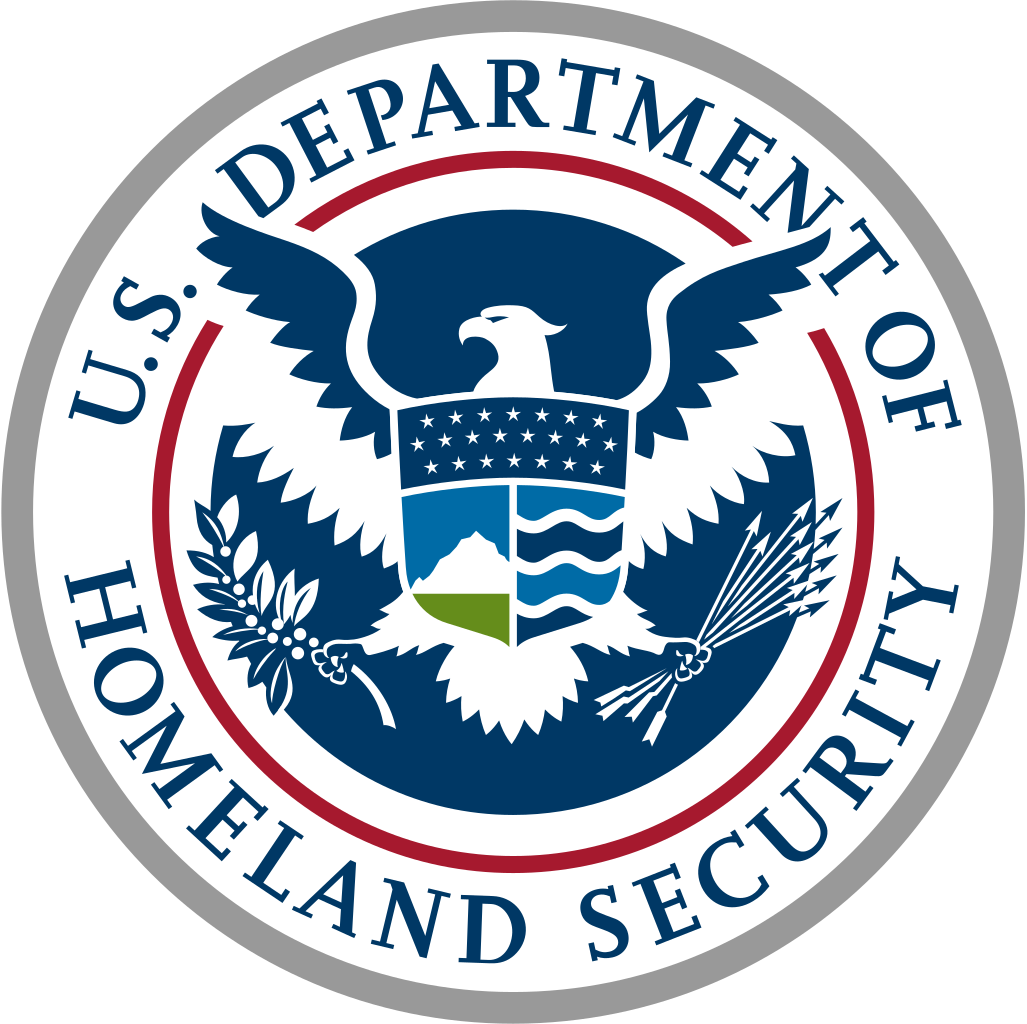
The extension applies to the guidance previously issued for employees hired on or after April 1, 2021, and who work exclusively in a remote setting due to COVID-19-related precautions. These employees are temporarily exempt from the physical inspection requirements associated with the Employment Eligibility Verification (Form I-9) until they undertake non-remote employment on a regular and consistent, or predictable basis, or the extension of the flexibilities related to such requirements is terminated, whichever is earlier.
See the original ICE news release from March 23, 2020, for more information.
E-Verify participants who meet the criteria and choose the remote inspection option should continue to follow current guidance and create cases for their new hires within three business days from the date of hire. See “Temporary Policies Related to COVID-19” for more information.
In Related News
E-Verify launched a redesigned Message Center webpage to enhance usability and update the look and feel to mirror its other updated pages. E-Verify users who have web services as part of their account will see web service messages on the updated Message Center webpage.
Tuesday, August 31, 2021: New Courses Available for Transitioning Military Spouses

VETS’ instructors lead the virtual workshops at various times each month to benefit military spouses stationed worldwide.
Tuesday, August 31, 2021: Sample Application Now Available for “HIRE Vets Medallion Award”
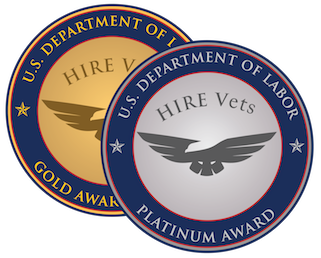
Wednesday, September 1, 2021: OFCCP Announced 400 New Full Compliance Reviews of Construction Contractors in its Latest CSAL

Following the tradition set in April 2018 following a DE Member Listening Session with the then OFCCP Director and his senior staff during which DE Members requested insight into the reasons OFCCP selected them for audit, OFCCP has again published its so-called Transparency Letter. The “Letter” takes the form of an informal memorandum and describes the methodology the agency has used to select contractors on the CSAL list for audit. The latest Transparency Letter reports:
“The [scheduling] list is distributed to district offices based on available human resources (FTE) as of July 27, 2021. OFCCP used the following criteria in developing this scheduling list:
- the contractors that had the highest aggregated contract value for all contract work performed in the district office’s jurisdiction were selected to meet each district office’s proportional share of reviews;
- federal contractors account for 75% of this scheduling list;
- federally assisted contractors account for the remaining 25% of contractors on this scheduling list; and
- federally assisted subcontractors represented less than 25% of the federally assisted contractors selected.
The scheduling list was sorted randomly, uploaded into OFCCP’s Compliance Management System, and distributed to each district office. Each district office must exhaust its previous construction scheduling list before starting on this new List. OFCCP does not purge scheduling lists.”
Compliance Assistance
Construction contractors may find OFCCP’s Construction Compliance Program webpage helpful. It includes:
- “Nondiscrimination in the Construction Trades Frequently Asked Questions”
- OFCCP’s Construction Technical Assistance Guide
- Best Practices for Construction Contractors and Subcontractors
On the List, But Shouldn’t Be?
If a contractor believes the OFCCP has made an error in selecting it for audit, the contractor should email the OFCCP Scheduling Mailbox at ofccp-dpo-scheduling@dol.gov.
In the Know
The OFCCP issued the last Construction CSAL on September 11, 2020. The Agency will complete those 200 Compliance Checks before beginning the 400 full Compliance Evaluations published on September 1, 2021.
See our story from Monday, April 8, 2019: OFCCP Proposes Two New Construction Compliance Check Audit Scheduling Letters, where we break down the nuances of each Scheduling Letter.
Wednesday, September 1, 2021: It’s September?! Take A Moment to Be Aware

- Workforce Development Month: The Senate recently passed a resolution naming September 2021 Workforce Development Month. Workforce development is critical to sustaining economic security for workers in the United States. DE’s longtime partner NASWA, along with workforce agencies around the country, will highlight a Workforce Development topic each week in September. Download the participation toolkit and spread the word!
- World Alzheimer’s Month: The month aims to raise awareness and challenge the stigma surrounding Alzheimer’s and dementia. The event has been running since 2012, and September 21st is World Alzheimer’s Day. DE Members, log into the DE Academy and check out DE’s year-long Disability Roundtable Masterclass education series featuring medical and HR accommodation experts and for its August episode you will a 60-minute Webinar titled: “Understanding & Accommodating Alzheimer’s, Huntington’s Disease, Aphasia, and Dementia.” For login access, email academy@directemployers.org.
- Suicide Prevention Awareness Month: A time to raise awareness on this stigmatized and often taboo topic. In addition to shifting public perception, we use this month to spread hope and vital information to people affected by suicide. The goal is to ensure that individuals, friends, and families have access to the resources they need to discuss suicide prevention and seek help. DE Members, log in to the DE Academy and check out DE’s Disability Roundtable Masterclass episode featuring in May: “Understanding & Accommodating Depression, Bipolar & Anxiety Disorder in the Workplace.” For login access, email academy@directemployers.org.
Check out What Health, National Calendar Day, and Medical News Today for other awareness events and days within September. See President Biden’s Proclamations on National Awareness Month for Ovarian Cancer, Prostate Cancer, Childhood Cancer, Sickle Cell Preparedness (see weekly themes & stats from the Census Bureau), Recovery, and Wilderness (see stats from the Census Bureau).
Wednesday, September 1, 2021: Artificial Intelligence in the Hiring Process…Friend or Foe?

With 2600 registered attendees from all over the world, one thing is clear; Artificial Intelligence is here to stay, and employers need guidance managing this slippery slope of technology.
Commissioner Sonderling kicked off the event with the same passion and information he presented at the National Industry Liaison Group’s Annual Conference. See our story, EEOC Commissioner Sonderling: Commission To Tackle Artificial Intelligence in Employment Decisions, for a recap. The Commissioner presented many thought-provoking scenarios, case studies, and statistics while ensuring listeners grasped these three topics.
- An understanding of the EEO laws the Agency enforces
- The risks that organizations face when utilizing AI including the potential for disparate treatment and disparate impact
- The 4/5ths Rule and the importance of understanding that Uniformed Guidelines on Employee Selection Procedures considers the 4/5ths calculation as a “rule of thumb,” which is not applicable in every situation. See FAQ #11
Cortnie, who spent time working at IBM on custom Artificial Intelligence solutions, startled listeners with a few shocking statistics, including that 80% of jobs are never posted, and 72% of resumes are weeded out before human eyes even see them. She explained the various steps that AI has with the potential to create bias in the hiring process. Job descriptions, job advertisements, social media vetting, and the hazards of “cloning” the best employees are just a few.
“In a recent AI survey, 71% of respondents thought AI would have a noticeable impact on their daily life in the next five years. Yet, 66% percent of people knew little to nothing about AI. Nonetheless, 85% were concerned about security and privacy of personal information as well as what would happen to their jobs.”
~ Why AI Truth?
Are you worried, excited, or curious about how AI will change the workforce? Get involved and speak up now. Commissioner Sonderling expressed his desire to hear all perspectives on AI, and Abercrombie’s company, AI Truth, seeks to share knowledge, collaborate and take action to safeguard the workspace while using AI.
Thursday September 2, 2021: Back to the Future: OFCCP Rescinds as Premature the Trump OFCCP’s Rescission of OFCCP’s Interest to Evaluate Employer EEO-1 Component 2 Pay Data Reports

How We Got Here
A Trump OFCCP November 25, 2019 Notice titled “Intention Not To Request, Accept, or Use Employer Information Report (EEO-1) Component 2 Data” had stated that OFCCP would not “request, accept, or use Component 2 data, as it does not expect to find significant utility in the data given limited resources and [the data’s] aggregated nature.”
What Does OFCCP Say it Wants to Do with the Component 2 Data?
By contrast, OFCCP’s Thursday Notice then went on to seek to justify its recission of the Trump Notice by echoing the Obama OFCCP’s 2014-era articulated reason to evaluate Component 2 hours worked and pay data as a possible tool to better select contractors for audit: “Also, analyzing compensation data in conjunction with other available information, such as labor market survey data, could help OFCCP identify neutral criteria to select contractors for compliance evaluations.”
While the see-saw nature of this issue is troublesome enough for federal contractors, the last sentence of OFCCP’s Notice expressed an entirely different and ominous policy intent than the Obama OFCCP’s intent to use Component 2 pay data to select audit targets. Rather, sounding the cry in recent years of women advocacy groups, OFCCP has now expressed its intent to set out in a different policy direction in a tag-on final sentence in its Thursday Notice stating that:
“OFCCP plans to analyze the Component 2 data collection to assess its utility for providing insight into pay disparities across industries and occupation and strengthen Federal efforts to combat pay discrimination.”
In thus suggesting that the Component 2 hours worked and pay data may have value to allow judgments about pay discrimination among either employers or federal contractors either within an industry or in selected job titles, OFCCP now reveals its belief that the Component 2 pay data, as reported, compare the pay of “similarly situated” employees…the touchstone of all Title VII and Equal Pay Act compensation discrimination analyses. At the same time, no career official in the Trump EEOC or OFCCP charged with pay discrimination authority thought the Component 2 hours worked and pay data had any utility because of this fatal flaw in the architecture of the collection of the Component data. The Component 2 pay data collection fatally requested employers to report together in common data cells very different kinds of employees who were not “similarly situated” (thus seeking to compare “apples with oranges”). These criticisms within the federal civil rights agencies echoed those criticisms of the Component 2 pay data collection tool shared by almost the entire federal government contractor community.
So, federal contractors are uncomfortably back into the political see-saw debating the fundamental legal and policy issue gripping federal pay data analyses: is the federal government going to apply Title VII standards to its pay discrimination analyses, or invent new analyses outside the direction of the Congress? That is the fundamental pay data issue which will haunt federal contractors the next three years.
Friday, September 3, 2021: August Job Numbers Plummet by Over Half a Million Jobs: COVID-19 Economic Recovery Stunted

In August, notable job gains occurred in professional and business services, transportation and warehousing, private education, manufacturing, and other services. Employment in customer-facing Hospitality and also retail trade jobs declined over the month, as restaurant hours and the number of tables with service shrank and as “Help Wanted” signs began appearing on the doors of millions of restaurants, hotels and retail businesses across the country.
In a defensive mode trying to defuse Friday’s bad jobs news, and looking at the glass half full in an effort to help stave off a severe plunge in the stock market, President Biden stated on national TV:
“We’re the only developed country in the world — I’ll say that again — we’re the only developed country in the world whose economy is now bigger than it was before the pandemic.”
| The Employment Situation – August 2021 | |||
|---|---|---|---|
| Unemployment Rate | Aug 2021 | July 2021 | Aug 2020 |
| National (Seasonally adjusted) |
5.2% | 5.4% | 8.4% |
|
Women (20+) |
4.5% 8.8% 4.6% 6.4% 5.1% 4.8% |
4.8% 8.2% 5.3% 6.6% 5.4% 5.0% |
7.4% 12.8% 10.6% 10.5% 8.0% 8.3% |
| Veterans (Not seasonally adjusted) |
3.6% | 4.0% | 6.4% |
| Individuals with Disabilities (Not seasonally adjusted) |
10.9% | 12.1% | 13.2% |
Friday, September 3, 2021: Nomination Process Open for the Advisory Committee on Veterans’ Employment, Training, and Employer Outreach

Members will consist of:
- Seven individuals, one each from among the representatives nominated by:
- the Society for Human Resource Management,
- the Business Roundtable,
- National Association of State Workforce Agencies,
- the United States Chamber of Commerce,
- the National Federation of Independent Business,
- a nationally recognized labor union or organization and
- the National Governors Association;
- no more than five representatives nominated by Veterans Service Organizations that have a national employment program; and
- no more than five individuals who are recognized authorities in the fields of business, employment, training, rehabilitation, or labor and who are not employees of DOL.
Deadline
Submit nominations by 11:59 p.m. EST on October 31, 2021.
Friday, September 3, 2021: President Biden Issued EO On White House Initiative on Advancing Educational Equity, Excellence, and Economic Opportunity through Historically Black Colleges and Universities
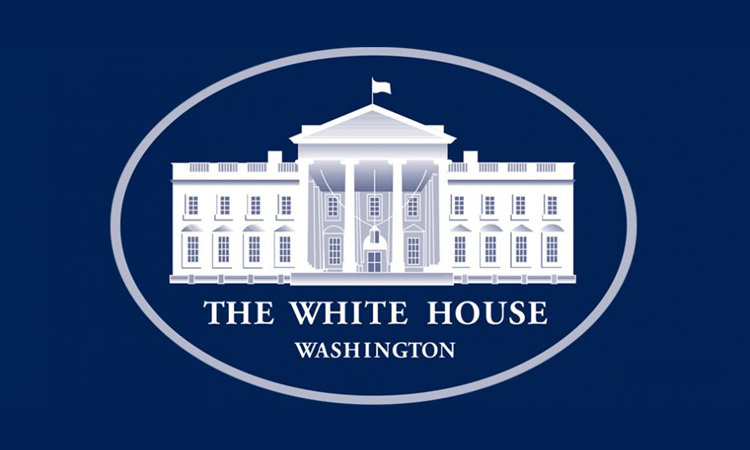
The White House Initiative
The Initiative establishes in the U.S. Department of Education an Executive Director who will provide advice to the President to advance equity, excellence, and opportunity at HBCUs and for the communities they principally serve. The Initiative Executive Director will coordinate a Government-wide policymaking effort to eliminate barriers HBCUs face in providing the highest-quality education to a growing number of students. The Initiative’s recommendations will include advice on advancing policies, programs, and initiatives that further the mission of the Initiative.
“It is the policy of my Administration to advance educational equity, excellence, and economic opportunity in partnership with HBCUs, and to ensure that these vital institutions of higher learning have the resources and support to continue to thrive for generations to come.” ~ President Biden
In the Know
OFCCP also has Minority Education Initiatives, including developing outreach and recruitment avenues between federal contractors and Historically Black Colleges and Universities (HBCUs) to offer resources to fill internships, apprenticeships, and entry-level jobs.
Friday, September 3, 2021: Revised EEO Tabulation Data for AAPs Must Be Used Starting January 1, 2022

Available Resources
From the Census Bureau:
From the OFCCP:
Per the announcement, the Agency plans to hold training, including live demonstrations, for contractors covering:
- what the EEO Tabulation is,
- how the Census Bureau develops the tabulation,
- why it is necessary to use the tabulation, and
- how to navigate the tabulation data.
Stay tuned for more details on training; in the meantime, the Agency has the following resources available:
- Determining Availability: Census EEO Tabulation
- Notice to Federal Contractors
- Frequently Asked Questions
The Regulation
41 CFR Section 60-2.14 Determining Availability
“(d): The contractor must use the most current and discrete statistical information available to derive availability figures. Examples of such information include census data, data from local job service offices, and data from colleges or other training institutions.”
Monday, September 6, 2021: The First Labor Day Parade – Almost a Disaster!
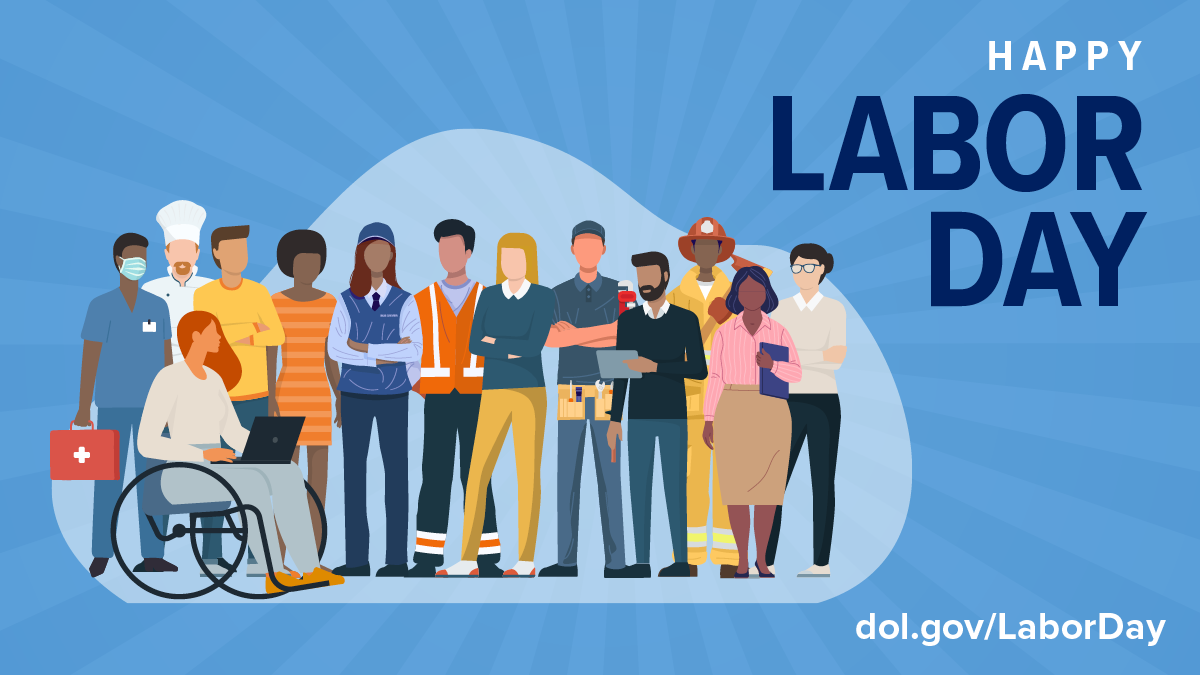
In the Know
On September 5, 1882, 10,000 workers took unpaid time off to march from City Hall to Union Square in New York City, holding the first Labor Day parade in U.S. history. However, the parade was almost a bust due to the absence of music. (Read here to find out how that story concluded with a happy ending!)
The idea of a “workingmen’s holiday,” celebrated on the first Monday in September, caught on in other industrial centers across the country, and by 1894, 23 states had passed legislation recognizing such a holiday. Congress would not legalize the holiday until 12 years later, when a defining moment in American labor history brought workers’ rights squarely into the public’s view. On May 11, 1894, employees of the Pullman Palace Car Company in Chicago went on strike to protest wage cuts and the firing of union representatives.
In reaction to the Pullman Car strike, on June 28, 1894, President Grover Cleveland signed a law making the first Monday in September of each year a national holiday.
More on Labor Day
- The U.S. Department of Labor’s “History of Labor Day” on its dedicated Labor Day webpage
- The History Channels’ Labor Day 2021 story
- President Biden’s Proclamation
- The Office of Public Affairs blog: Labor Day Q&A: How to Build a Better Future
THIS COLUMN IS MEANT TO ASSIST IN A GENERAL UNDERSTANDING OF THE CURRENT LAW AND PRACTICE RELATING TO OFCCP. IT IS NOT TO BE REGARDED AS LEGAL ADVICE. COMPANIES OR INDIVIDUALS WITH PARTICULAR QUESTIONS SHOULD SEEK ADVICE OF COUNSEL.
SUBSCRIBE.
Compliance Alerts
Compliance Tips
Week In Review (WIR)
Subscribe to receive alerts, news and updates on all things related to OFCCP compliance as it applies to federal contractors.
OFCCP Compliance Text Alerts
Get OFCCP compliance alerts on your cell phone. Text the word compliance to 55678 and confirm your subscription. Provider message and data rates may apply.



